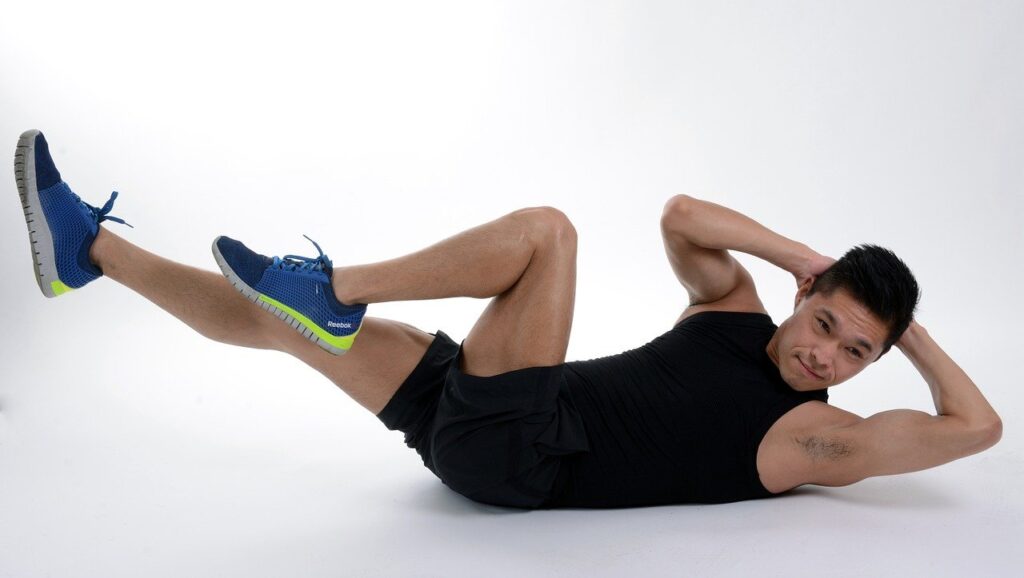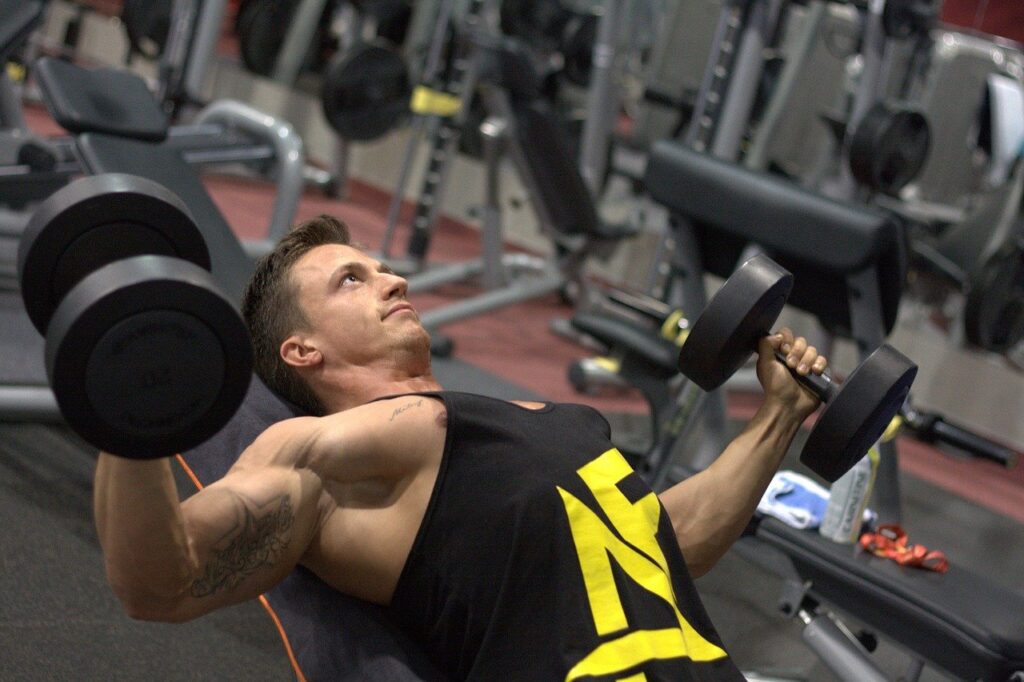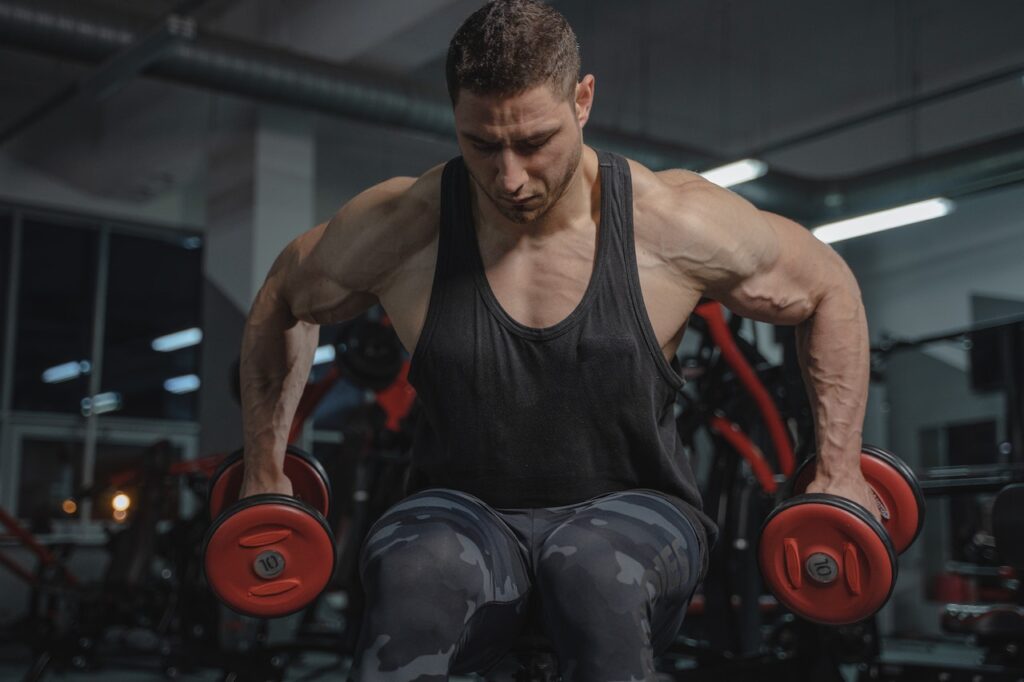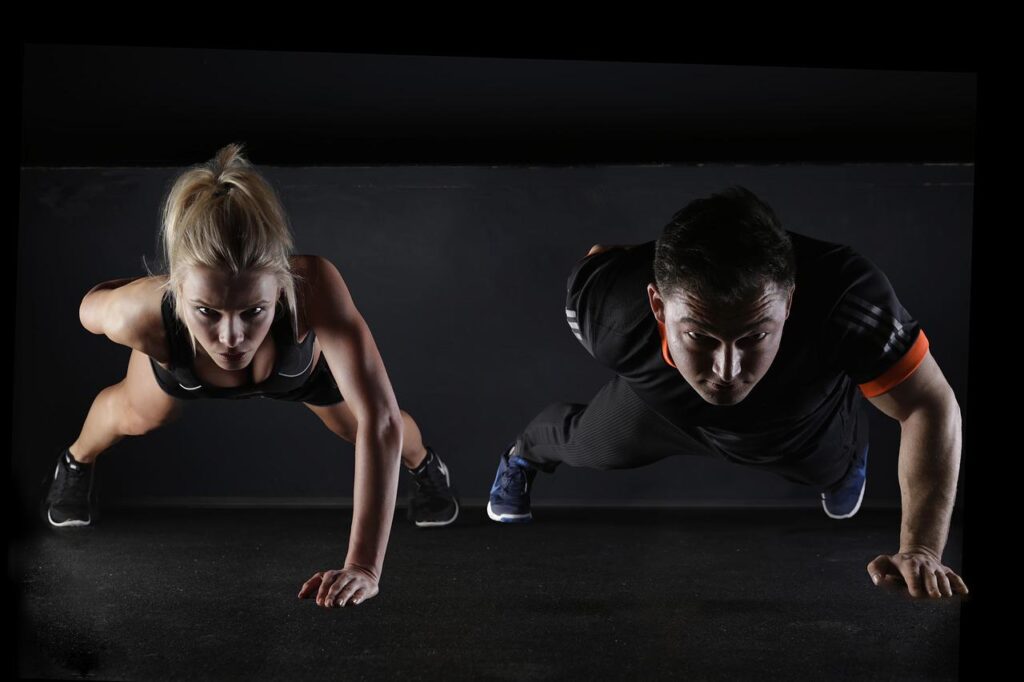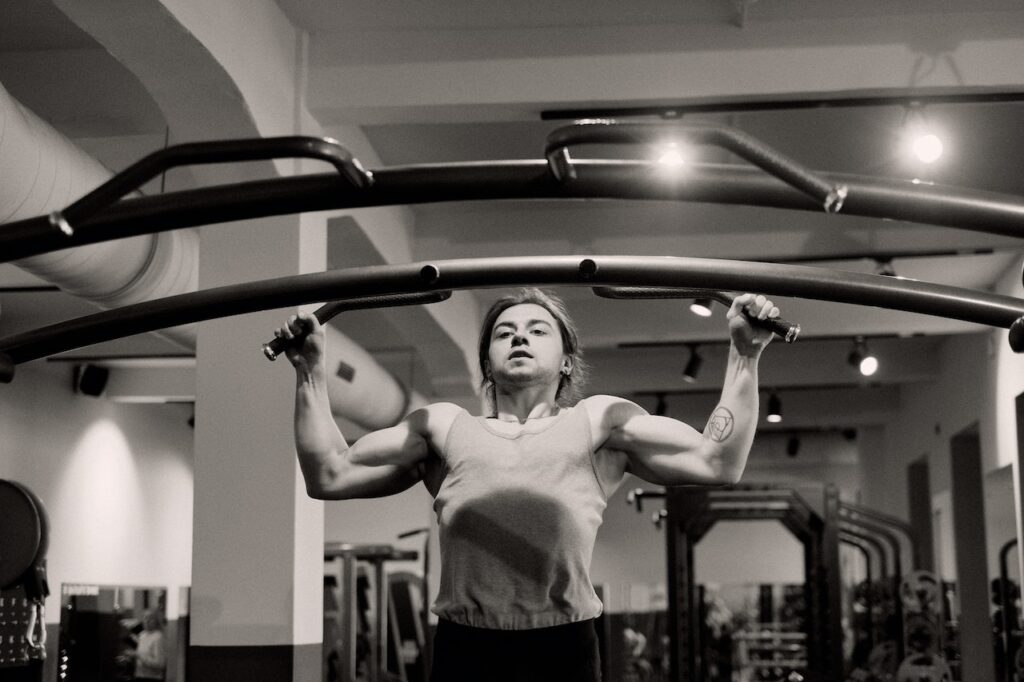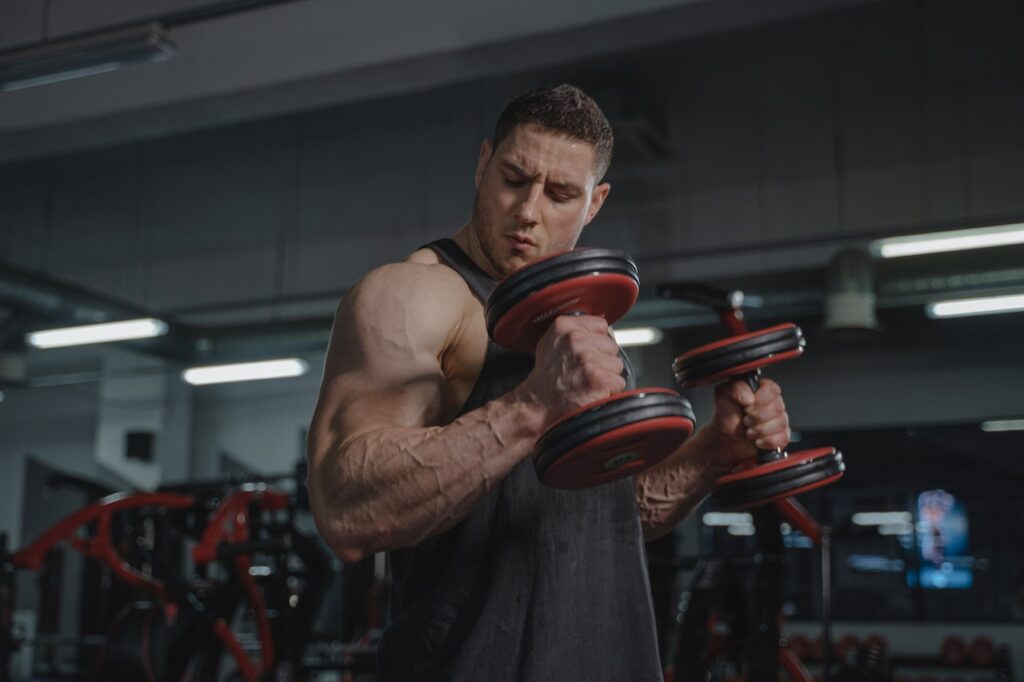Strong, defined arms don’t happen by accident they’re built with the right exercises and consistent training. This guide covers the best arm workout exercises for beginners starting their fitness journey and experienced lifters ready to break through plateaus.
We’ll break down the most effective bicep builders that create that coveted peak, plus the tricep movements that add serious size to the back of your arms. You’ll also discover why forearm training matters more than most people realize and how it impacts your entire upper body strength.
Essential Equipment for Effective Arm Training
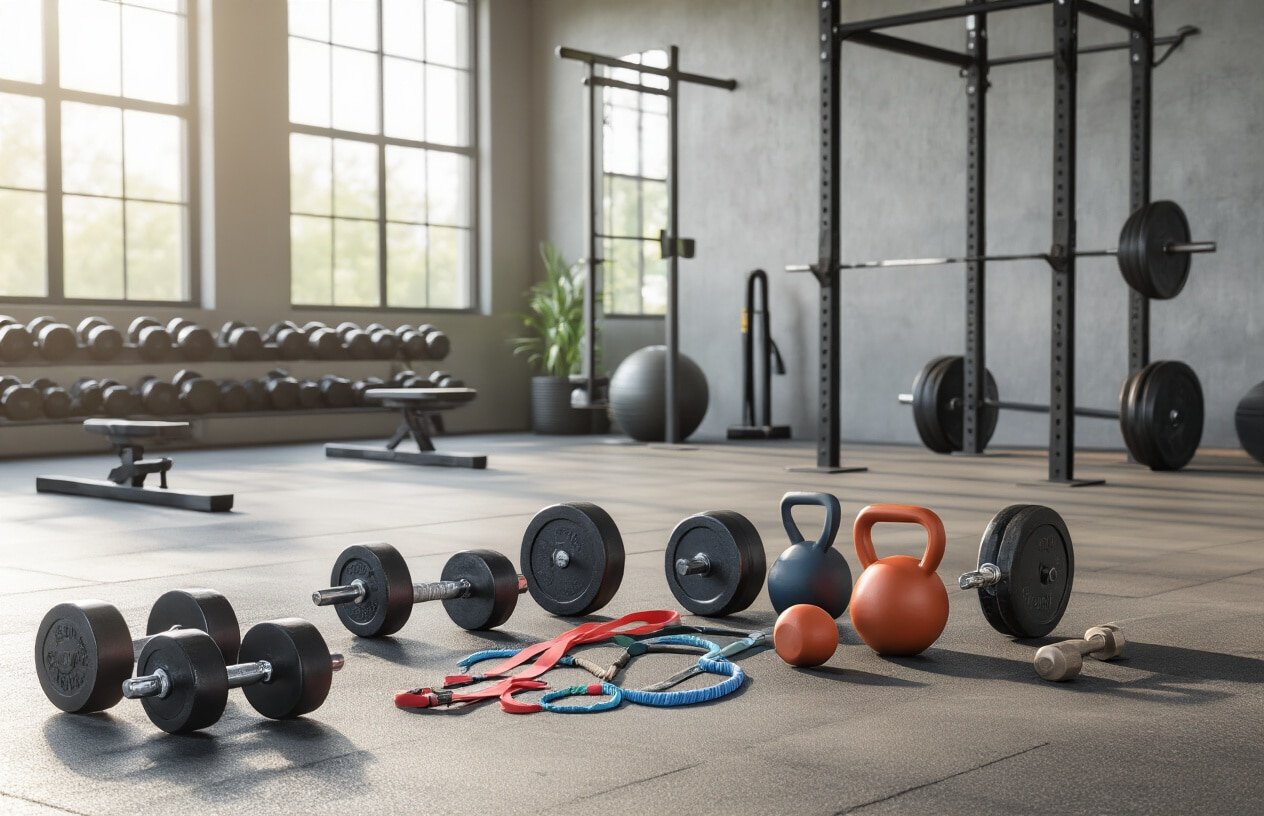
Dumbbells for versatile strength building
Dumbbells remain the cornerstone of any serious arm training setup. These versatile tools allow you to target every muscle group in your arms with precision and control. Unlike fixed machines, dumbbells force each arm to work independently, correcting muscle imbalances and improving overall coordination.
The beauty of dumbbells lies in their adaptability. You can perform bicep curls with varying grips – hammer curls for the brachialis, concentration curls for peak bicep development, or alternating curls for maximum time under tension. For triceps, overhead extensions, kickbacks, and close-grip presses become effortless with the right dumbbell weight.
When building your home gym or choosing equipment at the fitness center, consider adjustable dumbbells that range from 5 to 50 pounds per hand. This range covers everything from warm-up sets to heavy working weights for most intermediate to advanced lifters. Fixed-weight dumbbells work well too, but require more storage space.
Resistance bands for portable muscle activation
Resistance bands bring a unique training dimension that complements traditional weights perfectly. The elastic tension creates variable resistance – meaning the muscle works harder as the band stretches, providing maximum activation at the peak of each movement.
These portable powerhouses excel at pre-workout activation and post-workout burnout sets. Band pull-aparts target the often-neglected rear deltoids and rhomboids, while banded bicep curls provide constant tension throughout the entire range of motion. Tricep pushdowns with bands create an incredible pump that’s hard to replicate with free weights alone.
Loop bands, tube bands with handles, and flat resistance bands each serve different purposes. Loop bands work great for activation exercises, tube bands with handles mimic cable machine movements, and flat bands offer the most versatility for anchoring at different heights and positions.
Pull-up bars for bodyweight progression
Pull-up bars transform your arm workouts by introducing functional, compound movements that build real-world strength. While primarily known for back development, pull-ups and chin-ups heavily engage the biceps, especially when using an underhand grip.
The chin-up variation specifically targets the biceps while building impressive pulling strength. Close-grip chin-ups intensify bicep activation, while wide-grip pull-ups emphasize the lats with secondary bicep engagement. Negative reps help beginners build strength gradually by focusing on the lowering portion of the movement.
Doorway pull-up bars offer convenience and affordability, while wall-mounted or ceiling-mounted options provide more stability for advanced movements like muscle-ups or weighted variations. Power towers combine pull-up bars with dip stations, creating a complete upper body training station.
Cable machines for constant tension benefits
Cable machines provide consistent resistance throughout every inch of every rep, creating unique muscle-building advantages. The pulleys maintain constant tension on your muscles, eliminating the “rest points” that occur with free weights at certain angles.
For bicep development, cable curls allow you to adjust the angle of pull by changing the pulley height. High pulley curls target the bicep peak, while low pulley curls emphasize the stretched position. The rope attachment enables hammer curls with perfect form and wrist-friendly positioning.
Tricep training reaches new levels with cable systems. Pushdowns with various attachments – straight bar, rope, or V-bar – each provide slightly different muscle activation patterns. Overhead cable extensions stretch the triceps fully while maintaining tension, something difficult to achieve with free weights.
| Equipment Type | Best For | Space Required | Cost Range |
|---|---|---|---|
| Dumbbells | Isolation & compound moves | Medium | $100-$500 |
| Resistance Bands | Travel & activation | Minimal | $20-$60 |
| Pull-up Bars | Functional strength | Small | $30-$200 |
| Cable Machines | Constant tension | Large | $500-$3000 |
Powerful Bicep Building Exercises
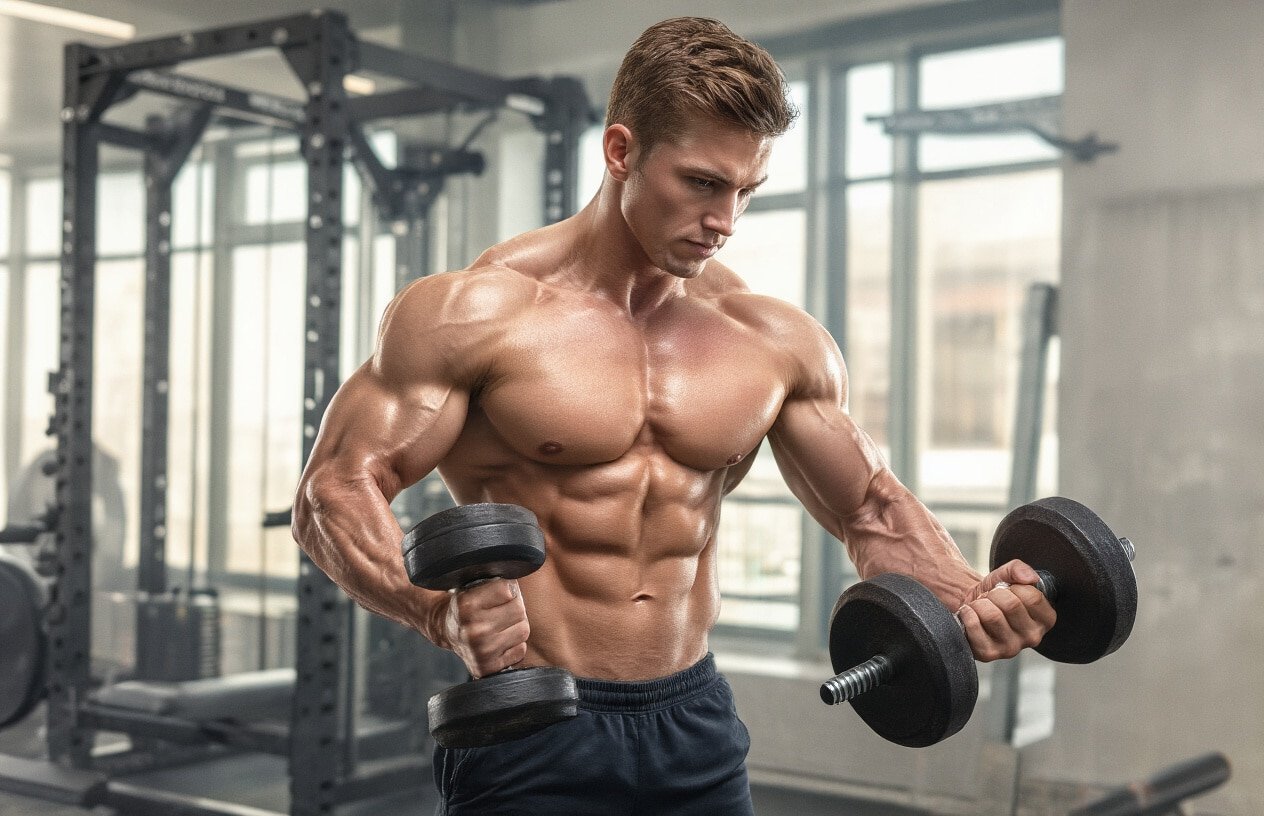
Barbell curls for maximum mass development
Barbell curls stand as the king of bicep exercises, delivering unmatched muscle mass development when performed correctly. This compound movement allows you to lift heavier weights than most other bicep exercises, making it perfect for building overall arm size and strength.
Start with your feet shoulder-width apart, gripping the barbell with an underhand grip slightly wider than your shoulders. Keep your elbows tucked close to your sides throughout the entire movement. The key lies in controlling the weight – lift the barbell slowly by flexing your biceps, squeeze at the top for a full second, then lower it back down with resistance.
Technique Tips:
- Avoid swinging your body or using momentum
- Keep your wrists straight and strong
- Focus on the mind-muscle connection
- Start with 3 sets of 8-12 repetitions
The barbell curl targets both heads of the bicep muscle simultaneously, creating that coveted peak and overall arm thickness. For beginners, start with just the Olympic bar (45 pounds) to master the form before adding weight plates.
Hammer curls for forearm and bicep strength
Hammer curls bring a unique twist to traditional bicep training by targeting the brachialis muscle underneath your biceps while simultaneously strengthening your forearms. This exercise uses a neutral grip position that mimics holding a hammer, creating a more balanced arm development.
Hold dumbbells at your sides with palms facing your body. Keep your upper arms stationary as you curl the weights up, maintaining that neutral grip throughout the movement. The beauty of hammer curls lies in their ability to work multiple muscle groups at once – your biceps, brachialis, and forearm muscles all get activated.
Benefits of hammer curls:
- Builds forearm thickness and grip strength
- Develops the outer portion of your biceps
- Reduces stress on wrists compared to traditional curls
- Improves overall arm functionality
Perform hammer curls with controlled movements, focusing on squeezing the muscles at the top of each rep. This exercise works exceptionally well as part of your best arm workout exercises routine, complementing barbell curls perfectly.
Concentration curls for peak muscle isolation
Concentration curls deliver laser-focused isolation that targets the bicep peak like no other exercise. This single-arm movement eliminates momentum and forces your biceps to work independently, creating that dramatic peak contraction that makes your arms look impressive from every angle.
Sit on a bench with your legs spread apart. Rest your elbow against the inside of your thigh, holding a dumbbell with your arm fully extended. Curl the weight up slowly, focusing entirely on your bicep doing the work. The seated position prevents cheating and ensures maximum muscle activation.
Setup and execution:
- Use a weight that challenges you for 10-15 reps
- Pause at the top of each rep for maximum contraction
- Lower the weight slowly to maintain tension
- Complete all reps on one arm before switching
The isolation nature of concentration curls makes them perfect for finishing your bicep workout. Many bodybuilders credit this exercise with developing their bicep peaks, as it allows for incredible focus on the muscle contraction. The mental connection you develop during concentration curls carries over to other exercises, improving your overall training effectiveness.
Tricep Exercises for Complete Arm Development
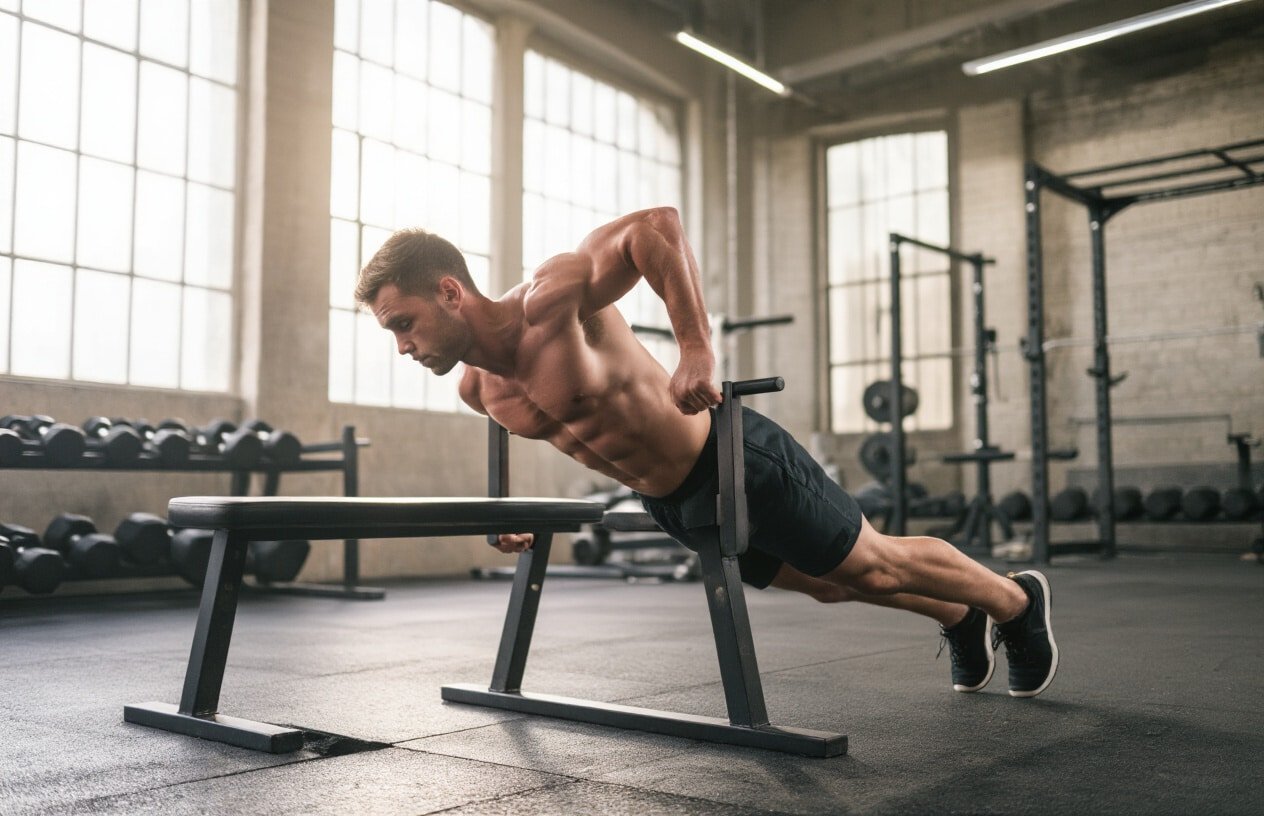
Close-grip push-ups for bodyweight tricep power
Close-grip push-ups transform the classic push-up into a tricep-focused powerhouse. Position your hands close together, forming a diamond shape with your thumbs and index fingers touching. This hand placement shifts the primary workload from your chest to your triceps, creating intense muscle activation without any equipment.
Start in a standard push-up position, but bring your hands directly under your chest. Keep your core tight and lower your body until your chest nearly touches your hands. Push back up with control, squeezing your triceps at the top. Beginners can modify this exercise by performing it on their knees or against an elevated surface like a bench.
The beauty of close-grip push-ups lies in their versatility. You can perform them anywhere, making them perfect for home workouts or travel routines. Focus on maintaining proper form over speed – slow, controlled movements deliver better results than rushed repetitions.
Overhead tricep extensions for stretch activation
Overhead tricep extensions create maximum stretch in the tricep muscle, triggering enhanced growth through full range of motion. This exercise works best with dumbbells, kettlebells, or resistance bands, allowing you to target the long head of the tricep effectively.
Hold a dumbbell with both hands above your head, arms fully extended. Keep your upper arms stationary and slowly lower the weight behind your head by bending at the elbows. Feel the stretch in your triceps, then press the weight back to the starting position. Your elbows should stay close to your head throughout the movement.
Single-arm variations add an extra challenge by requiring core stability and allowing you to work each arm independently. This helps identify and correct strength imbalances between your left and right sides. Start with lighter weights to master the movement pattern before progressing to heavier loads.
Tricep dips for functional strength gains
Tricep dips build real-world pushing strength while targeting all three heads of the tricep muscle. You can perform dips using parallel bars, a sturdy chair, or a bench – making this exercise incredibly accessible for any fitness level.
Position yourself between parallel bars or on the edge of a bench with your hands supporting your body weight. Lower yourself by bending your elbows until you feel a stretch in your shoulders and chest. Press back up to the starting position, focusing on using your triceps to drive the movement.
Adjust the difficulty by changing your foot position. Keep your knees bent with feet flat on the ground for an easier variation, or extend your legs straight out for increased challenge. Advanced athletes can add weight using a dip belt or holding a dumbbell between their legs.
Diamond push-ups for targeted muscle engagement
Diamond push-ups represent the ultimate bodyweight tricep exercise, creating a diamond shape with your hands to maximize tricep activation. This variation challenges your muscles differently than close-grip push-ups, providing targeted engagement that builds serious arm strength.
Place your hands on the ground with your thumbs and index fingers forming a diamond shape directly under your chest. Maintain a straight line from your head to your heels as you lower your chest toward your hands. The narrow hand position forces your triceps to work harder than in traditional push-ups.
This exercise demands significant upper body strength, so don’t worry if you can only complete a few repetitions initially. Progress gradually by starting with modified versions on your knees or against an incline. As your strength improves, work toward performing full diamond push-ups on your toes for maximum tricep development.
Forearm Strengthening for Grip Power

Wrist Curls for Flexor Muscle Development
Wrist curls target the often-neglected flexor muscles on the underside of your forearms, building the foundation for a powerful grip. Sit on a bench with your forearms resting on your thighs, palms facing up. Hold a barbell or dumbbells with your wrists hanging over your knees. Slowly curl your wrists upward, squeezing your forearms at the top of the movement. Lower the weight back down with control, allowing your wrists to extend fully.
Start with lighter weights to master the form – your forearms will fatigue faster than you expect. Aim for 12-15 repetitions with perfect control. The key is feeling the burn in your forearm flexors, not using momentum to swing the weight up. You can also perform reverse wrist curls by flipping your hands over, palms facing down, to target the extensor muscles on the top of your forearms.
For variety, try single-arm variations or use resistance bands when traveling. The constant tension from bands creates a different stimulus that keeps your muscles guessing.
Reverse Curls for Extensor Balance
Reverse curls work your brachioradialis and forearm extensors while also hitting your biceps from a different angle. Stand with feet shoulder-width apart, holding a barbell with an overhand grip. Keep your elbows close to your sides and curl the weight up, focusing on squeezing your forearms throughout the movement.
Your grip strength will be the limiting factor here, so expect to use significantly less weight than regular bicep curls. This exercise creates balanced forearm development by strengthening the muscles that oppose your flexors. Many people skip this movement, leading to muscle imbalances that can cause elbow pain and grip weakness.
Try different grip widths to target various parts of your forearms. A closer grip emphasizes the brachioradialis more, while a wider grip spreads the work across more muscle fibers. Cable reverse curls offer consistent tension throughout the entire range of motion, making them an excellent alternative to barbells.
Farmer’s Walks for Functional Grip Endurance
Farmer’s walks combine grip strength, core stability, and functional movement into one powerful exercise. Grab two heavy dumbbells, kettlebells, or farmer’s walk handles and simply walk forward with good posture. Keep your shoulders back, core tight, and take controlled steps.
The beauty of farmer’s walks lies in their simplicity and effectiveness. Your grip gets challenged isometrically while your entire body works to maintain stability. Start with shorter distances and gradually increase both weight and walking distance as your grip endurance improves.
Different variations keep this exercise challenging:
- Single-arm farmer’s walks: Carry weight in one hand to challenge core stability
- Mixed implements: Use different shaped objects like kettlebells and dumbbells
- Timed holds: Stand still and hold the weights for time instead of walking
Your grip will give out before your legs do, which makes this perfect for building the kind of grip strength that transfers to deadlifts, pull-ups, and real-world activities. These walks also improve your posture and teach you to maintain spinal alignment under load.
Advanced Arm Training Techniques
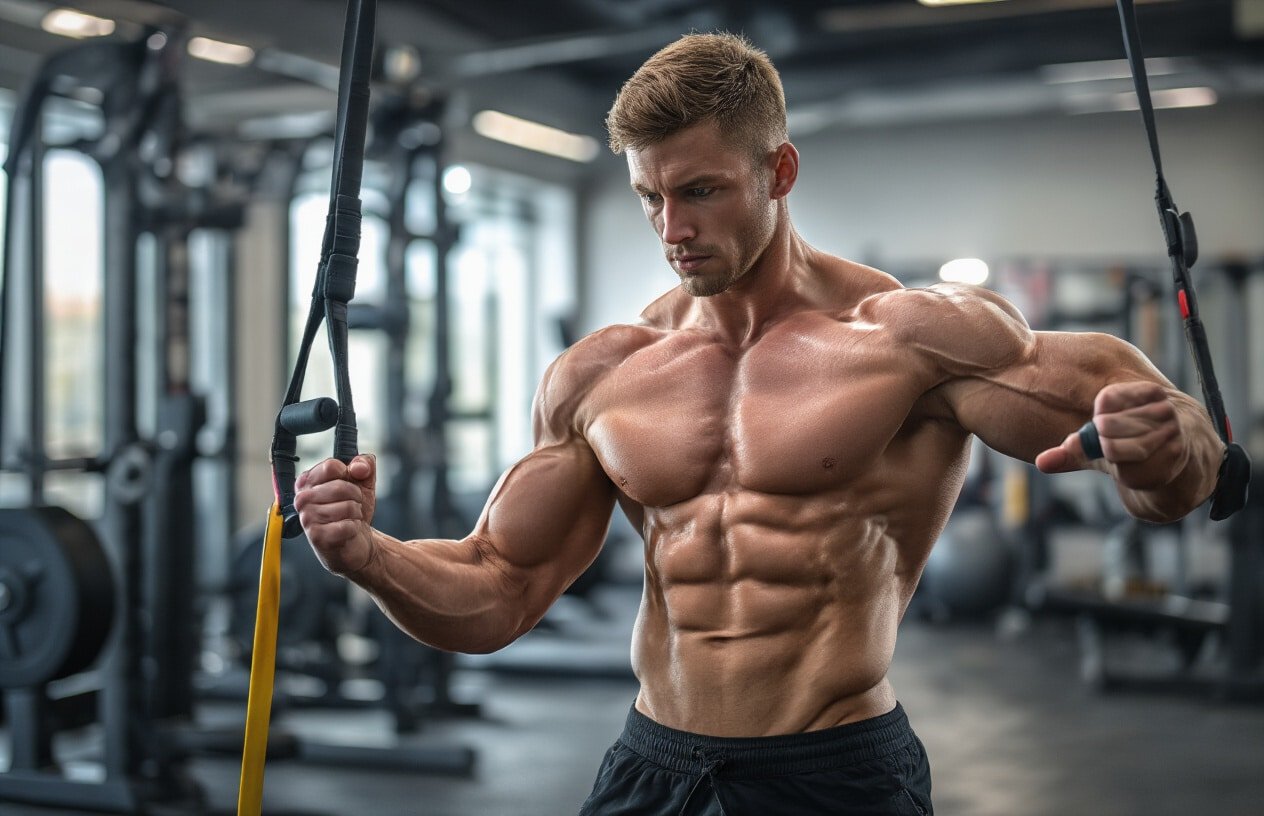
Supersets for Time-Efficient Muscle Fatigue
Supersets pair two exercises back-to-back with no rest between them, creating an intense muscle-burning experience that maximizes your gym time. For arms, try combining bicep curls with tricep dips, or hammer curls with overhead tricep extensions. This approach forces blood to shuttle between opposing muscle groups, creating a powerful pump while keeping your heart rate elevated.
The beauty of supersets lies in their versatility. You can target the same muscle group twice (compound supersets) or work opposing muscles (antagonistic supersets). Compound supersets, like doing barbell curls followed immediately by concentration curls, push your biceps to complete exhaustion. Antagonistic supersets allow one muscle to recover while the other works, making them perfect for busy schedules.
Drop Sets for Breaking Strength Plateaus
Drop sets demolish strength plateaus by extending your sets beyond normal failure points. Start with a challenging weight, perform reps until failure, then immediately reduce the weight by 20-30% and continue. Repeat this process 2-3 times within the same set.
For bicep drop sets, begin with heavy barbell curls, then drop to lighter dumbbells, finishing with resistance band curls. This technique forces your muscles to recruit different fiber types as fatigue sets in, stimulating growth in ways standard sets cannot achieve. The key is moving quickly between weight changes – have your lighter weights ready before starting.
Tempo Training for Enhanced Muscle Control
Tempo training manipulates the speed of each rep phase to increase time under tension and improve muscle control. Use a four-number system: eccentric, pause, concentric, and top pause. For example, a 3-1-2-1 tempo on bicep curls means 3 seconds lowering, 1-second pause at bottom, 2 seconds lifting, and 1-second pause at top.
Slow eccentrics (the lowering phase) create significant muscle damage, leading to greater strength gains. Try 5-second negatives on tricep extensions or bicep curls. Your muscles can handle more weight eccentrically than concentrically, so have a training partner help with the lifting phase while you control the descent.
Rest-Pause Method for Maximum Intensity
Rest-pause training pushes you past normal failure by incorporating brief rest periods within a single set. Perform reps until failure, rest 10-15 seconds, then squeeze out more reps. Repeat 2-3 times.
This technique works exceptionally well with isolation exercises like tricep kickbacks or bicep curls. The short rest allows your phosphocreatine system to partially recharge, giving you enough energy for additional reps. Your muscles stay under tension longer, creating a powerful growth stimulus.
Pre-Exhaustion for Targeted Muscle Activation
Pre-exhaustion involves performing an isolation exercise before a compound movement to ensure your target muscle works harder. For triceps, do tricep extensions before close-grip push-ups. For biceps, perform concentration curls before chin-ups.
This technique prevents stronger muscles from taking over during compound movements. When your triceps are pre-fatigued, they become the limiting factor in subsequent exercises, ensuring they receive maximum stimulation even when other muscles could continue working.
Recovery and Nutrition for Optimal Arm Growth
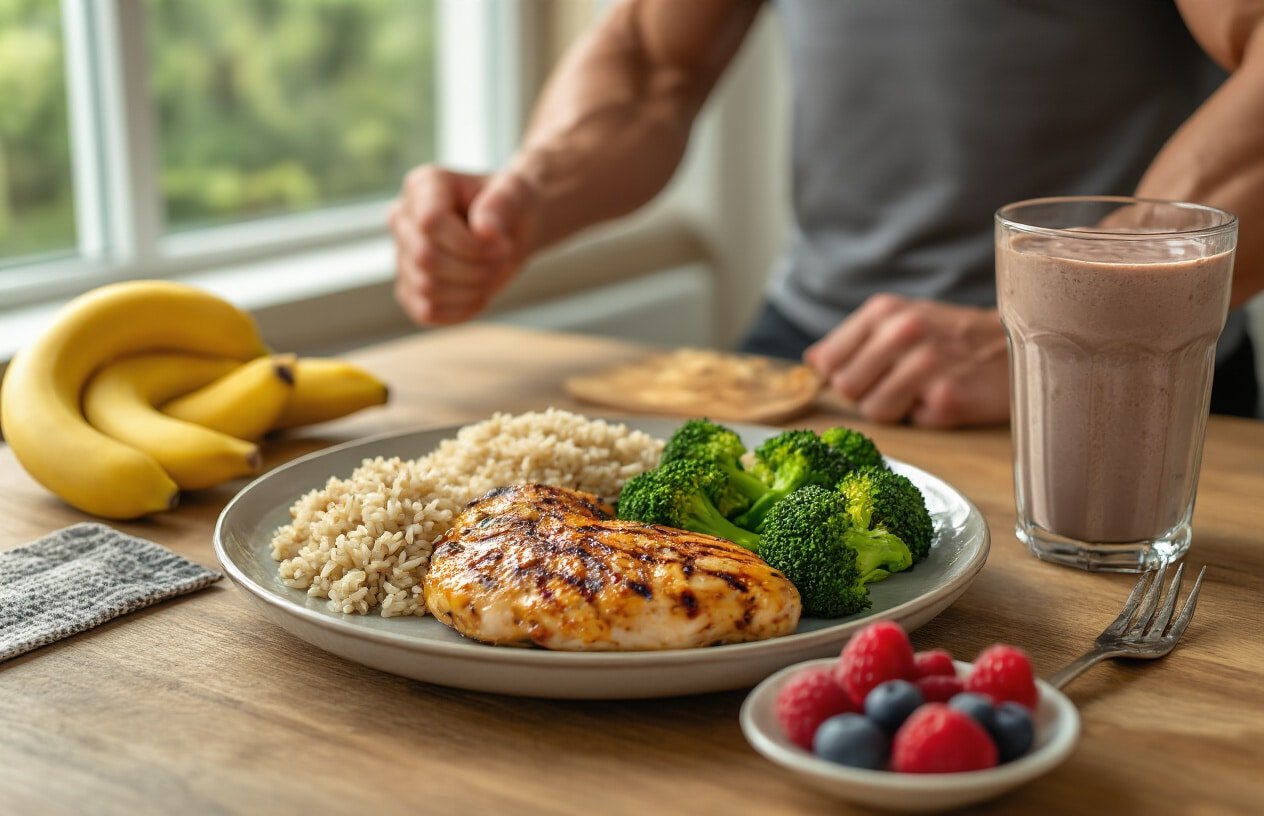
Post-workout stretching for flexibility maintenance
Your arm muscles work incredibly hard during training, and they deserve proper care afterward. Stretching after your workout isn’t just a nice-to-have activity – it’s essential for maintaining the flexibility and range of motion your muscles need to keep growing and performing at their best.
Start with basic arm circles and shoulder rolls to loosen up the joints. Hold each stretch for 20-30 seconds to get real benefits. The overhead tricep stretch works wonders – simply reach one arm overhead, bend the elbow, and gently pull with your opposite hand. For your biceps, try the doorway stretch by placing your palm against a wall or doorframe and slowly turning away from your arm.
Don’t forget your forearms either. Prayer stretches and wrist flexor stretches help prevent tightness that can affect your grip strength in future workouts. The cross-body shoulder stretch targets your rear delts and helps maintain shoulder health, which directly impacts how well you can perform the best arm workout exercises.
Consistency matters more than perfection here. Even five minutes of targeted stretching after each arm session will pay dividends in reduced soreness, better recovery, and maintained flexibility for your next workout.
Protein timing for muscle repair acceleration
Your muscles don’t just grow during workouts – they actually grow during recovery when your body repairs the microscopic damage created by resistance training. Protein timing plays a huge role in how efficiently this repair process happens.
The magic window isn’t as narrow as some people claim, but getting protein within two hours after your workout definitely helps kickstart the recovery process. Aim for 20-30 grams of high-quality protein that contains all essential amino acids. Whey protein shakes are popular because they’re fast-digesting, but Greek yogurt, eggs, or lean chicken work just as well.
| Protein Source | Amount | Protein Content | Absorption Speed |
|---|---|---|---|
| Whey protein powder | 1 scoop | 25g | Fast (1-2 hours) |
| Greek yogurt | 1 cup | 20g | Medium (2-3 hours) |
| Chicken breast | 3 oz | 26g | Slow (3-4 hours) |
| Eggs | 3 whole | 18g | Medium (2-3 hours) |
Spreading your protein intake throughout the day matters just as much as post-workout timing. Your muscles are constantly breaking down and rebuilding, so they need a steady supply of amino acids. Try to include protein with every meal and aim for about 0.8-1 gram per pound of body weight daily.
Sleep optimization for growth hormone release
Sleep is where the real magic happens for muscle growth. During deep sleep stages, your body releases the highest amounts of growth hormone, which directly supports muscle repair and development. Skimping on sleep essentially wastes the hard work you put in at the gym.
Most people need 7-9 hours of quality sleep, but if you’re training hard, you might need closer to 8-9 hours to fully recover. Your body does most of its muscle-building work during the first few hours of deep sleep, so consistency in your sleep schedule helps optimize this process.
Create an environment that promotes deep sleep. Keep your room cool (around 65-68°F), dark, and quiet. Put away screens at least an hour before bed since blue light can interfere with melatonin production. A warm bath or some light reading can help signal to your body that it’s time to wind down.
Consider your evening nutrition too. A small snack with casein protein (like cottage cheese) before bed provides your muscles with a slow-release protein source throughout the night. Avoid caffeine after 2 PM and limit alcohol, as both can disrupt your sleep quality even if they don’t keep you awake.
Track your sleep patterns for a week or two. Many people discover they’re getting less quality sleep than they thought, which explains why their muscle gains have plateaued despite solid training and nutrition.
Conclusion
Building impressive arms requires a smart mix of the right equipment, targeted exercises, and proper recovery strategies. From basic dumbbells and resistance bands to specialized grip trainers, having the right tools makes all the difference in your training results. The key exercises we covered – bicep curls, tricep dips, hammer curls, and forearm grips – form the foundation of any solid arm routine, while advanced techniques like drop sets and supersets can push your progress to the next level.
Your arms grow during rest, not just during workouts, so don’t skip the recovery and nutrition piece of the puzzle. Get enough protein, stay hydrated, and give your muscles time to rebuild between sessions. Start with the basics, focus on proper form over heavy weight, and gradually work your way up to more challenging variations. Consistent training with these proven exercises will have you seeing real changes in your arm strength and size within just a few weeks.


